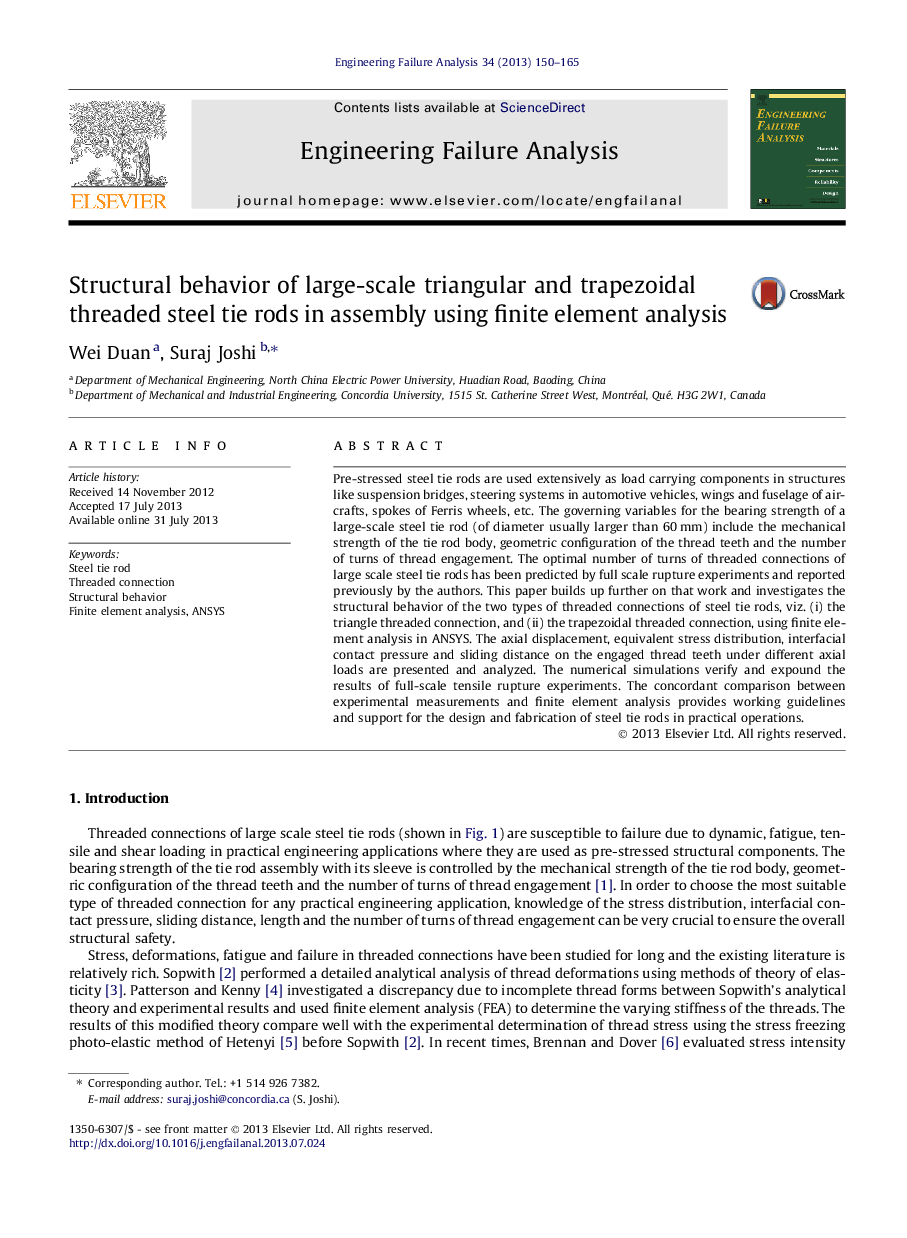| Article ID | Journal | Published Year | Pages | File Type |
|---|---|---|---|---|
| 768503 | Engineering Failure Analysis | 2013 | 16 Pages |
Abstract
Pre-stressed steel tie rods are used extensively as load carrying components in structures like suspension bridges, steering systems in automotive vehicles, wings and fuselage of aircrafts, spokes of Ferris wheels, etc. The governing variables for the bearing strength of a large-scale steel tie rod (of diameter usually larger than 60 mm) include the mechanical strength of the tie rod body, geometric configuration of the thread teeth and the number of turns of thread engagement. The optimal number of turns of threaded connections of large scale steel tie rods has been predicted by full scale rupture experiments and reported previously by the authors. This paper builds up further on that work and investigates the structural behavior of the two types of threaded connections of steel tie rods, viz. (i) the triangle threaded connection, and (ii) the trapezoidal threaded connection, using finite element analysis in ANSYS. The axial displacement, equivalent stress distribution, interfacial contact pressure and sliding distance on the engaged thread teeth under different axial loads are presented and analyzed. The numerical simulations verify and expound the results of full-scale tensile rupture experiments. The concordant comparison between experimental measurements and finite element analysis provides working guidelines and support for the design and fabrication of steel tie rods in practical operations.
Related Topics
Physical Sciences and Engineering
Engineering
Industrial and Manufacturing Engineering
Authors
Wei Duan, Suraj Joshi,
